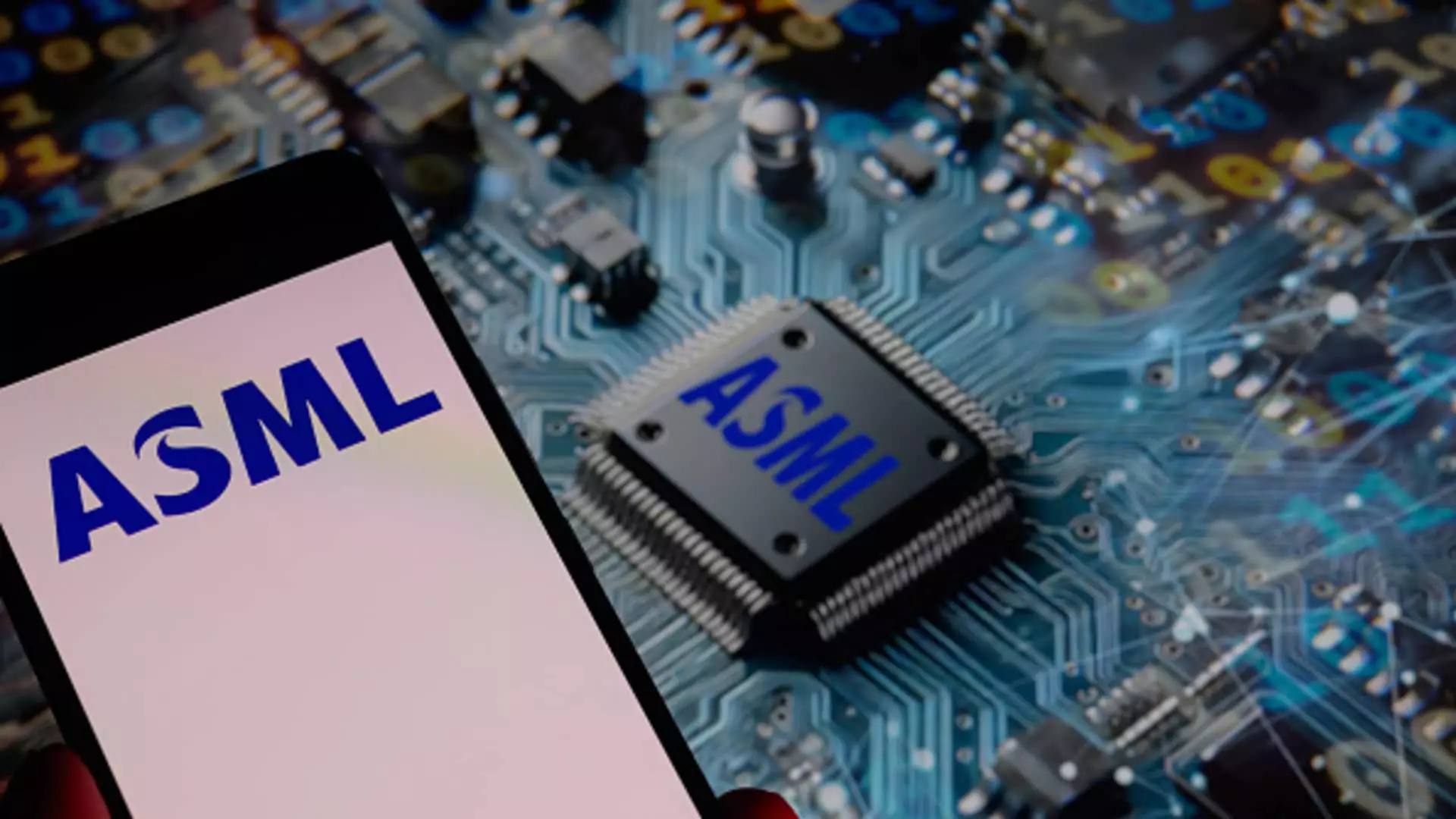The semiconductor industry, a cornerstone of modern technology, has always been susceptible to fluctuations in market sentiment, regulatory shifts, and geopolitical tensions. One of its leading figures, ASML, a Dutch company revered for its pivotal role in producing extreme ultraviolet lithography (EUV) machines, has seen its market capitalization plummet by more than $130 billion within a year. This decline serves as a stark reminder of how quickly fortunes can change in this volatile landscape. Once soaring to over 1,000 euros per share, ASML is now grappling with a valuation nearing $297 billion as of recent trading sessions. This downturn not only reflects the company’s declining stock but encapsulates the broader uncertainties pervading the semiconductor market.
Geopolitical Strains and the Semiconductor Supply Chain
Much of ASML’s current predicament can be traced back to stringent U.S. export control measures targeting China and an ever-present threat of tariffs that rattle investor confidence. The urgency of these measures cannot be overstated; as governments grapple with issues of national security and economic dominance, companies like ASML find themselves caught in a web of international tensions. The imposition of these restrictions on export markets, especially with regard to China—one of the largest consumers of semiconductor technology—significantly limits ASML’s market potential. The insight from industry analysts like Stephane Houri highlights the collective anxieties of equipment manufacturers responding to fears surrounding U.S. policy restrictions—a narrative that underpins the broader challenges faced across the supply chain.
The ‘High NA’ Challenge: Navigating Uncharted Waters
While ASML continues to innovate with next-generation High NA machines, the inherent difficulties in shipping to China cut off a critical revenue stream. This raises a consequential question: Can ASML maintain its competitive edge when weighed down by regulatory constraints? The company is arguably one of the few globally capable of producing these cutting-edge lithography machines, offering it a unique advantage. However, as CEO Christophe Fouquet posits, there’s an expectation that the company’s dependency on the Chinese market will decrease in the coming years—a prediction that suggests a long-term shift in business strategy is warranted. ASML’s future growth hinges on navigating these turbulent waters without access to one of the world’s largest markets.
Investor Sentiment in the Eye of the Storm
Despite the turbulent external environment, analysts have exhibited a surprisingly positive outlook on ASML’s prospects. With an average target price predicting a 17% upside from current levels, it raises questions regarding market resilience amid unpredictability. This optimism might stem from a broader belief in the indispensable need for advanced semiconductor technology, particularly as major players like Samsung and Intel continue to invest heavily in future-ready chipmaking tools. As pressure mounts on traditional manufacturing techniques, the value of ASML’s cutting-edge offerings cannot be overstated, leaving room for a resurgence if the geopolitical climate stabilizes.
The Role of International Negotiations
The narrative surrounding tariffs and international negotiations cannot be ignored; they hold the keys to potential recovery. A trade agreement that brings U.S. tariffs in sync with European trade interests could lift the uncertainty clouding investor sentiment. Just as Houri mentioned, synchronized negotiations could lead to a breath of fresh air across the sector, providing ASML and others with a much-needed reprieve. This means that progress in diplomatic engagements becomes more than mere political posturing—it directly impacts global supply chains and technological advancements.
In drawing this complex picture of ASML’s current state, one cannot ignore that it stands at a critical juncture. The combination of regulatory hurdles, geopolitical tension, and internal business recalibrations presents challenges that demand strategic resilience. The outcomes of international negotiations, the pace of technological evolution, and the adaptability of companies like ASML will ultimately dictate not just their survival but their growth in an increasingly competitive and uncertain landscape. ASML’s future, like the semiconductor industry itself, teeters on a precipice where foresight, innovation, and strategic recalibration will be essential in navigating these turbulent times.

Leave a Reply